Vogue 1952 Wrap Dress for the win, Easy, simple, fun to sew
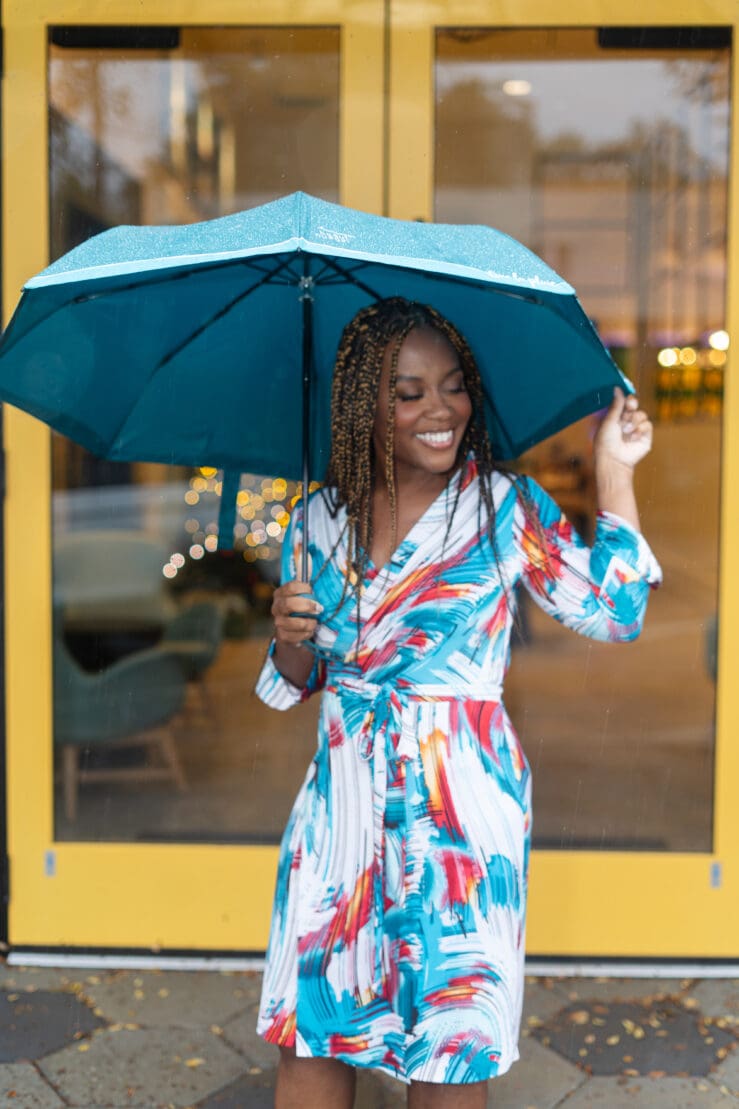
The wrap dress by Vogue 1952 is an instant favorite in my wardrobe for all the right reasons. The wrap dress is an ageless garment that flatters all body types and can be dressed up or down. Since its introduction, the wrap dress has remained a timeless and classic garment. Various designers have reinterpreted and reinvented it with different iterations and variations over the years. Today, the wrap dress continues to be a staple in many women’s wardrobes, offering both style and versatility. The Vogue 1952 pattern is a classic take on this style, and it’s perfect for sewists of all skill levels.
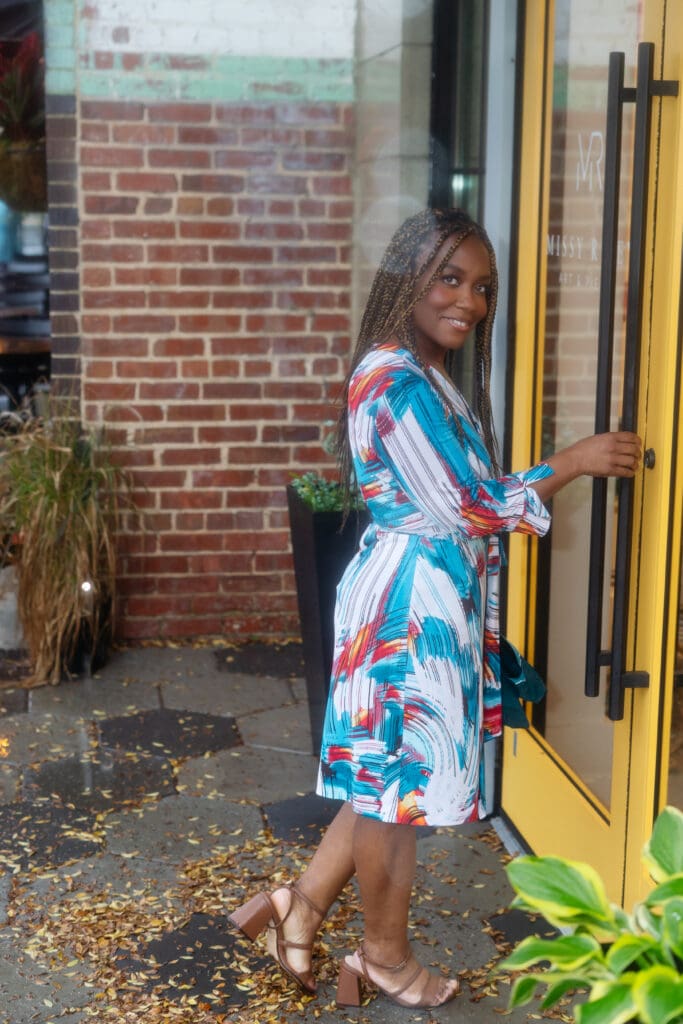
What you’ll love about the Vogue 1952 wrap dress pattern:
- Easy to sew: This pattern is rated as “easy” by Vogue, so it’s an excellent choice for beginners. The instructions are clear and concise, and plenty of online tutorials and resources are available to help you along the way. Unlike the Burda 6344 dress I made, it has a full sleeve and an unbraided belt.
- Flattering fit: The wrap dress is a universally flattering style that cinches the waist and skims over the hips. Also the Vogue 1952 pattern also has a fitted bodice and a flared skirt, creating a beautiful hourglass silhouette.
- Versatile: The wrap dress can be dressed up or down. For a casual look, pair it with sandals and a denim jacket. For a more formal look, dress it up with heels and jewelry.
- Two views to choose from: The Vogue 1952 pattern comes with two views: View A has three-quarter sleeves with split detail, and View B has short sleeves and a collar.
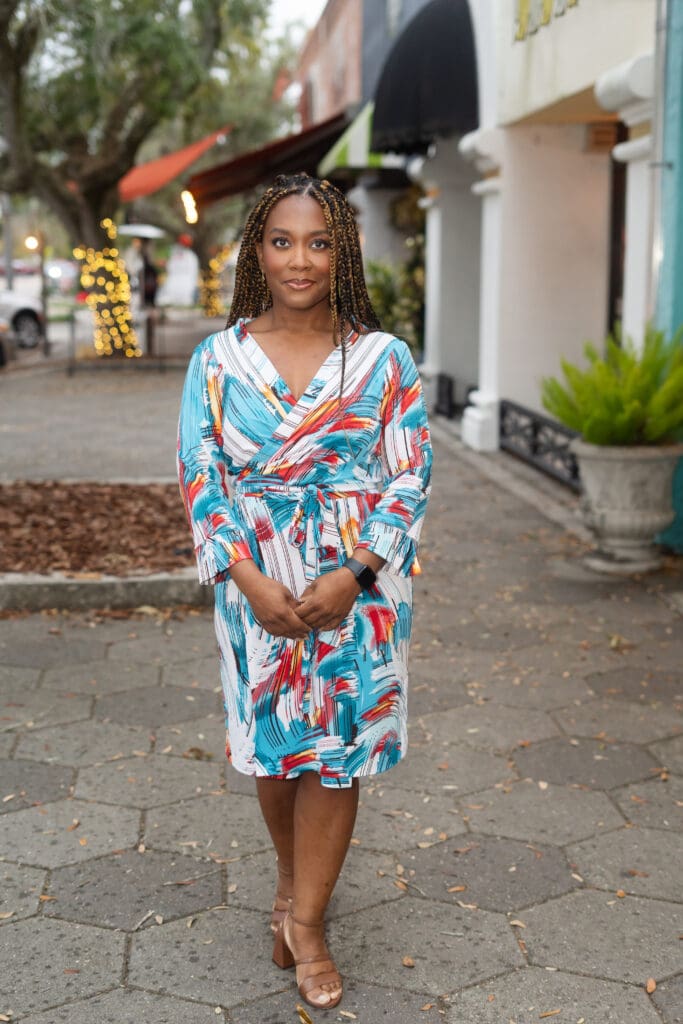
History of the Wrap Dress
The wrap dress boasts a rich history, predating its iconic 1970s association with Diane von Furstenberg. Here’s a journey through its fascinating timeline:
Early Echoes:
- Ancient Origins: Wrap styles trace back to the Shang Dynasty in China (1600-1046 BC), evident in wrap-over necklines. Similar styles were also found in Korea, Japan, and Europe.
- 1930s Innovations: Elsa Schiaparelli, a surrealist fashion pioneer, embraced wraps in the 1930s, incorporating them into dramatic evening gowns.
Paving the Way:
- 1940s American Casual: Claire McCardell, an American designer, further popularized the wrap in the 1940s with practical, casual designs like her denim “popover” dress. Therefore, this marked a shift towards comfort and functionality.
Diane’s Debut and Rise:
- 1970s Revolution: Diane von Furstenberg truly popularized the wrap dress in the 1970s and made it an iconic garment.
- Diane von Furstenberg enters the scene in 1972 with a wrap top and skirt set. She recognizes its potential and transforms it into a one-piece dress made from the iconic jersey knit fabric. This versatile, easy-to-wear dress becomes an instant success, empowering women with its flattering fit and independent styling.
- Her iconic wrap dress was introduced in 1974 and quickly became a sensation. It was a simple yet elegant design that featured a self-tie closure at the waist, allowing the dress to wrap around the body and create a flattering silhouette. The wrap dress was versatile, comfortable, and suitable for various occasions, making it a favorite among women of all ages.
- Global Phenomenon: The wrap dress takes the world by storm, worn by celebrities like Angelica Huston and Bianca Jagger. So, it becomes a symbol of the liberated, working woman of the 1970s.
Did you know? The iconic wrap dress was featured in the opening scene of “Star Wars: Episode IV – A New Hope,” worn by Princess Leia!
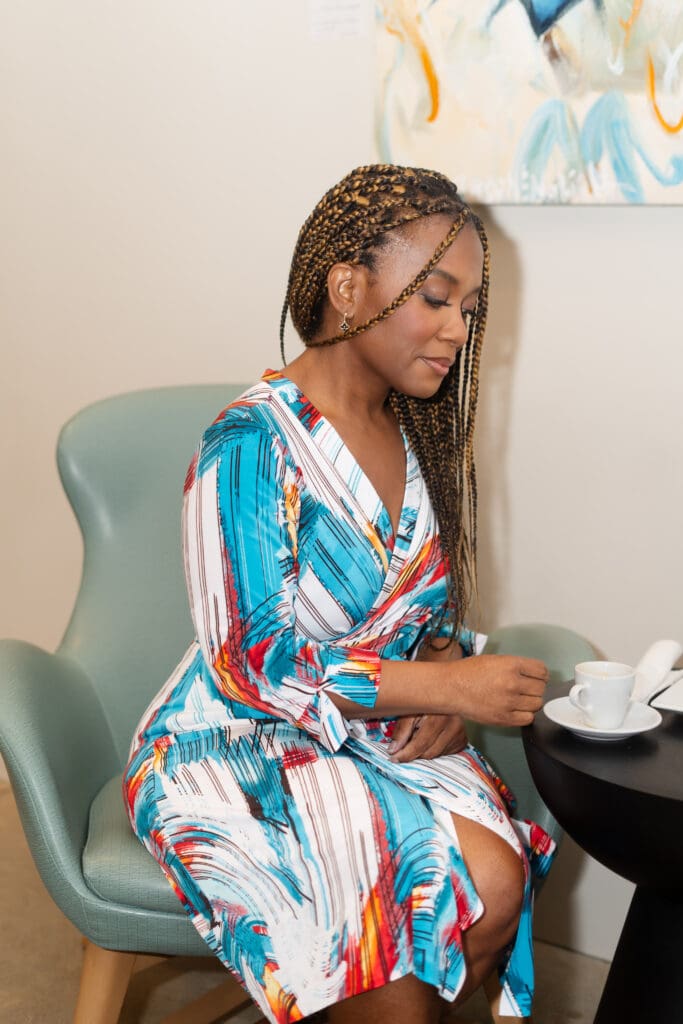
Evolution and Enduring Appeal:
Beyond DVF: While heavily associated with Furstenberg, other designers like Norma Kamali and Halston also contributed to the wrap’s evolution, experimenting with fabrics, prints, and lengths.
Today’s Legacy: The wrap dress remains a timeless staple, constantly reinvented by designers and embraced by women worldwide for its adaptability, comfort, and flattering silhouette.
Tips for Sewing the Vogue 1952 Wrap Dress:
- Choose a medium-weight knit.
- Make sure to cut the fabric accurately. The wrap dress relies on precise cutting to ensure a good fit.
- Take your time when sewing the bodice. The bodice is the most challenging part of the dress, so be sure to pay attention to the instructions and don’t rush.
- Try on the dress as you sew to ensure it fits properly. The wrap dress should be snug but not too tight.
- Once you’ve sewn your Vogue 1952 wrap dress, you’ll reach for it repeatedly. It’s a versatile and stylish garment that will always stay in style.
Petite Alternations for the Dress
As always, I chopped the length to petite status. 5-6 total inches were removed from the length in various places to keep the garment’s integrity. No bodice adjustments were made except minor fit adjustments to the side seams. I cut a size 12 on top and a 14 for the skirt portion.
One last thing about the Vogue 1952 Wrap Dress
When it comes to the instructions, putting the tie together is a bit tricky. I ended up relying on my previous experience doing these types of dresses because I couldn’t figure out what in the world they were talking about. There are several ways to envelope and encase the outer edge of the front of the dress; my brain couldn’t imagine what they wanted, so I did it my way. I wasn’t too keen on finishing touches in the end. As long as you have a method, you’ll be fine. I love, love love the neckline; I also love the movement of this dress and the classiness of the style (something we are missing these days in fashion). I like that it’s feminine yet sexy and classy all at the same time.
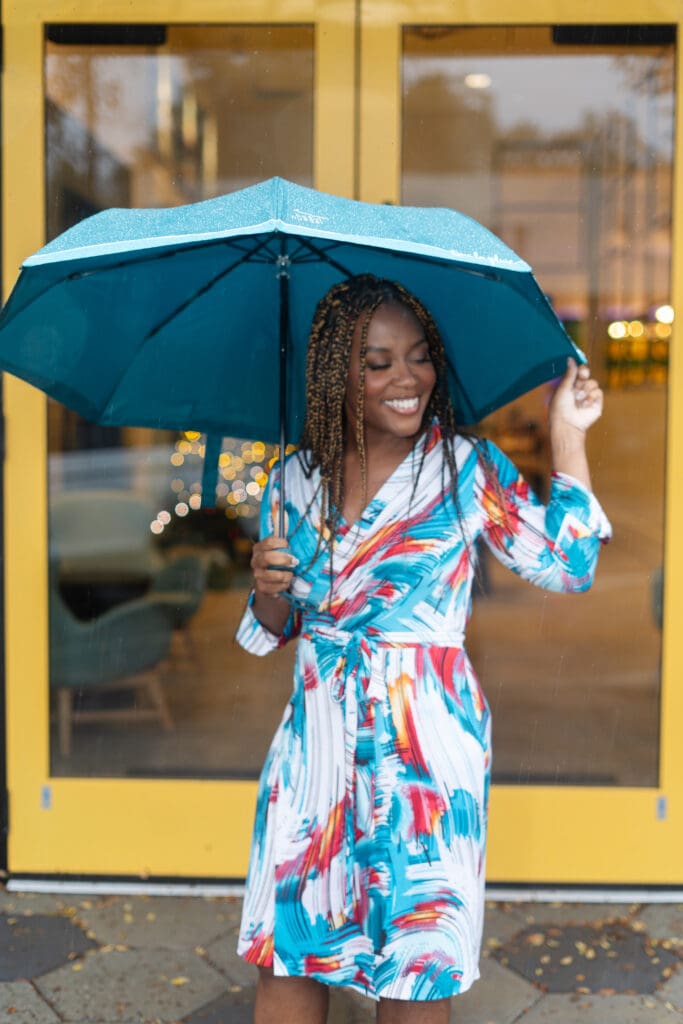
Here are some additional things to consider when sewing the Vogue 1952 wrap dress:
- The pattern comes in sizes 6-8-10-12-14 and 16-18-20-22-24.
- The pattern costs around $20 or less if you can get it on sale.
- You can buy the pattern online or at your local fabric store.
Future Hacks and Adjustments
- Add some pockets
- Color Block it — on the sleeves and neckline
I hope this blog post inspired you to sew your Vogue 1952 wrap dress. With time and effort, you can create a beautiful and timeless garment you’ll love to wear for years.
Happy sewing!